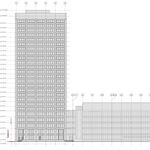The situation on Sheppard doesn't justify a subway based on expected utilisation...
Says who?
Seriously, even what's public by way of development along this route is very substantial; but there's a lot that isn't yet public.
But forget about the fuzzy.
There are 40s+ towers rising and proposed at Bayview, Bessarion, Don Mills (by by count more than a dozen tower form proposals are public at this intersection alone); Consumers, Victoria Park, Kennedy (Agincourt Mall redevelopment) etc.
While to the west, the proposal at for adding tens of thousands of people at Downsview is public.
****
I'm not going to pre-empt too much, but I've hinted already at big proposals at Bathurst, be assured big things are coming at Midland, McCowan and Markham.
it justifies a Line 5 style treatment.
Line 5 is radically under-sized vs the development already proposed/approved along the east end of the route; we've going to have to go back and bury it.
Unfortunately people really find the idea of right sizing line 4 unpalatable
This is fortunate, actually, if we're going to build what a lot of interested parties imagine.
If the Ontario line through much more urban areas doesn't justify subway like vehicle capacity and fully underground routing, how could Sheppard?
As
@adys123 notes above, while I may feel the O/L capacity estimates are a tad optimistic and I have concerns about the capacity constraints imposed on GO/VIA/HSR by the joint corridor, the O/L is very much a Metro/Subway.




